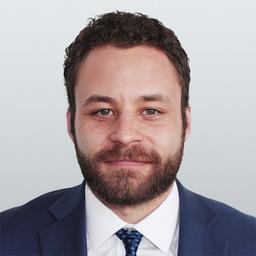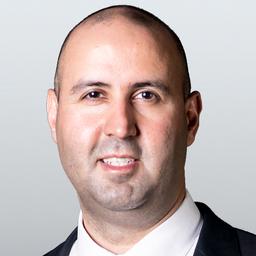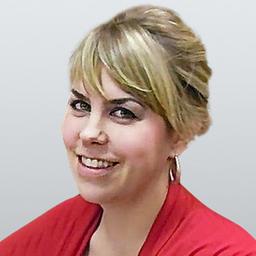The Liberals have won Canada’s April 28 election, forming government for a fourth consecutive term, with Mark Carney remaining prime minister.
It is not yet clear whether the Liberals have won more than half the seats in the nation’s House of Commons to form a majority government, or if they will remain a minority government.
The win marks a remarkable feat for Carney, a former central banker who turned the Liberals’ fortunes around after winning the party’s leadership race on March 9 to replace Justin Trudeau, and was sworn in as prime minister on March 14.
In his victory speech, Carney put emphasis on the need for national unity, boosting the country’s economy, and responding to U.S. tariffs under President Donald Trump and the U.S. president’s remarks about wanting Canada to be a part of the United States, a central focus of Carney’s campaign.
“Let’s put an end to the vision and anger of the past. We are all Canadian, and my government will work for and with everyone,” Carney said, while thanking his rivals in the election.
Carney said under his leadership, Canada is going to “build, baby, build,” create hundreds of thousands of “good jobs,” and make Canada an “energy superpower in both clean and conventional energy.”
“It’s time to build an industrial strategy that makes Canada more competitive while fighting climate change,” he said.
Carney repeated his prior comments that with the Trump presidency, America’s relationship with Canada based on the “system of open global trade” has fundamentally changed, calling it a “betrayal.”
“When I sit down with President Trump, it will be to discuss the future economic and security relationship between the two sovereign nations, and it will be with our full knowledge that we have many, many other options than the United States to build prosperity for all Canadians,” he said.
The win secures a fourth consecutive term in government for the Liberals, following Justin Trudeau’s 2015 victory over the Harper Conservatives, winning a majority, followed by minority governments in 2019 and 2021.
Carney, who holds a master’s and doctorate in economics from Oxford, served as governor of the Bank of Canada from 2007 to 2013 and of the Bank of England from 2013 to 2020. After 2020, he became active in the private sector and also served as the U.N. Special Envoy on Climate Action and Finance, resigning earlier this year to enter the race for the Liberal leadership.
Shift in Polls
Throughout 2024, Pierre Poilievre’s Conservatives led the polls with a double-digit advantage over the Liberals, as support for Trudeau’s Liberals declined rapidly. However, the polls shifted following Trump’s tariffs and his comments suggesting Canada should become part of the United States, and Carney’s takeover of the Liberal leadership.In his post-election speech, Poilievre said he will remain as leader and pledged to continue holding the Liberal government to account.
“I know that some of you might be disappointed that change did not get over the finish line tonight,” Poilievre told supporters. “Change takes time. Most of all, it requires that we never give up because our people and our country are worth fighting for.”
Poilievre celebrated the gain in seats for his party, as well as the increase in the share of national votes for the Conservatives. As of 2:45 a.m., the Conservatives held 41.6 percent of the national vote—a nearly 8 point increase compared to the 33.7 percent the party had in the 2021 election.
As of 2:45 a.m., it wasn’t yet clear if Poilievre would win in his own riding of Carleton, which he has represented since 2004, with Liberal candidate Bruce Fanjoy leading with 50 percent of the votes, compared to Poilievre’s 47 percent.
“Obviously, I’m disappointed that we could not win more seats, but I’m not disappointed in our movement. I’m hopeful for our party,” Singh told supporters in his post-election speech.
Bloc Québécois Leader Yves-François Blanchet comfortably won his seat in the Quebec riding of Beloeil-Chambly, which he has held since 2019. Blanchet raised eyebrows in the final days of the campaign when he said Canada was an “artificial country with very little meaning” and that he felt like an MP in a “foreign parliament.”
Green Party Co-leader Elizabeth May, who had served as MP for Saanich-Gulf Islands in B.C. since 2011, was able to win re-election. Green Party Co-leader Jonathan Pedneault, who ran in the Montreal riding of Outremont, did not win.
Two-Way Race
The vote came after a month-long campaign that developed into a two-way race between Carney’s Liberals and Poilievre’s Conservatives.Also on the ballot were Singh’s NDP, the Bloc Québécois led by Blanchet, the Green Party co-led by May and Pedneault, and the People’s Party of Canada led by Bernier.
An all-time high of 7.3 million Canadians voted in the advance polls conducted over the Easter weekend. This figure exceeds the previous high of 5.8 million ballots during the 2021 federal election, according to Elections Canada.
At dissolution, the Liberals held 153 seats in the House of Commons, the Conservatives 120, the Bloc Québécois 33, the NDP 24, and the Greens two. There were also three Independent MPs and a few vacant seats.
Election Amid Tariffs

The election came at a time when U.S. tariffs and policies affecting Canada loomed large, impacting election messaging and voter intentions.
Trump has made announcements regarding tariffs on Canadian goods, only to suspend and then re-announce them multiple times in recent months. Currently, the United States is imposing 25 percent tariffs on Canadian products not included in the North American free trade agreement, a 10 percent tariff on energy and potash, a 25 percent tariff on steel and aluminum, and a 25 percent tariff on auto parts. Canada has retaliated with its own tariffs on some U.S. goods.
Trump has also made comments that Canada should be a part of the United States. Trump took to social media on Canada’s election day to again insist the country would be better off as part of the United States.
Carney focused his election campaign on the response to the Trump presidency, saying the current situation presents the “greatest crisis of our lifetime.”
Poilievre also said during the campaign that Canada’s sovereignty is not up for negotiation but focused his campaign mainly on change, saying the country needed a new government after nearly 10 years of Liberals being in power.









